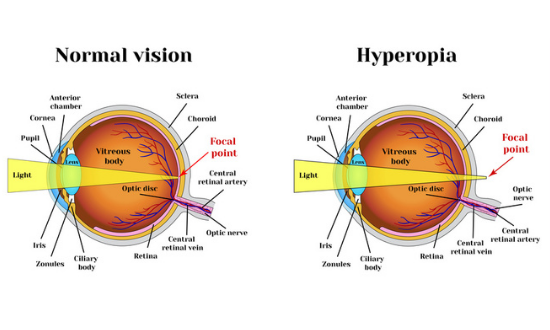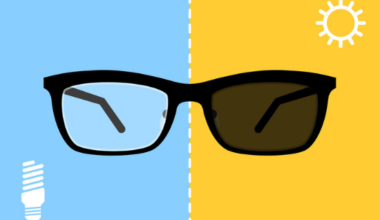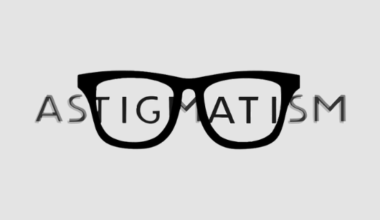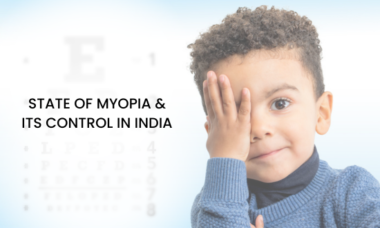It is predicted that more than 60% of the world is likely to be myopic by 2050. However, there exists an eye condition that is the opposite of myopia and rather rare. I’m talking about Hypermetropia also known as Hyperopia or Farsightedness or Long-sightedness or Short-sightedness. In this blog, I will explain in detail all the aspects of this eye condition.
Let’s start with the simple mechanism of the vision, the light coming from its origin travel through the layers of the cornea, crystalline lens, vitreous humor and finally falls upon the retina, where an inverted image is formed. The image is converted into electrophysiological impulses that are carried to the brain via optic nerves.
Refractive conditions occur when light rays do not converge appropriately to form a focal point on the retina. Understanding the theory of light is a completely different chapter but in brief, light rays bend when they travel through the cornea and the lens of the eye and the point where they meet is called the focal point. It is significantly important that the focal point is formed on the center of the retina so as to view a picture perfectly.
Hypermetropia
Coming to the definition of Hypermetropia; it is a condition wherein the light rays are focused behind the retina while the accommodation of the lens is zero. This is because the power of the crystalline lens is less powerful. The lens of an Emmetropic eye (Normal eye) has power between +14.0 to +18.0 Dsph. A hyperopic patient is given a plus power correction to gain a 6/6 vision.

Hypermetropia Symptoms
Let’s look into some symptoms:
- Distance objects are more clearly seen than near objects.
- Power increases with age.
- Discomfort in work
- Headache
- Watering from the eye
Hyperopia is often confused with Presbyopia. However, despite the similar symptoms, both conditions are different. Presbyopia is an aging condition where the lens loses its elasticity and hence your ability to see near objects gradually reduces. Presbyopic patients also need a plus power correction to see near objects.
Types & Causes of Hypermetropia
Unlike Presbyopia, Hyperopia occurs due to various other reasons. Let me explain different types of Hypermetropia.
- Axial Hypermetropia: Opposite to myopia, this condition occurs when the length of the eyeball is shorter than normal causing the light rays to fall behind the eye. In such conditions, Lasik correction treatments are not possible.
- Curvatural Hypermetropia: When the curvature of the cornea or the lens is flatter than normal causes the light rays to fall behind the retina. The normal curvature of the cornea is 8mm.
- Index Hypermetropia: Often during the treatment of diabetes or with age the refractive index of the lens changes. As a result, light rays fall behind the retina causing the condition of Hyperopia.
- Positional Hypermetropia: When the lens or the orbit shifts from its original place; usually happens in a physical accident leading to the condition of positional hypermetropia.
- Absence of lens: In previous times, cataract surgeries were not so advanced and removal of lens resulted in Hyperopia requiring approximately +10 Dsph correction.
Hypermetropia Correction
Hyperopia is a rare refractive condition that can be corrected using one of the three methods.
- Wearing farsighted eyeglasses with appropriate plus power lenses.
- Plus power contact lenses for long-sightedness.
- Lasik surgery for hyperopia.
Lasik for many seems to be a one-time investment for getting rid of bulky glasses. However, there are certain side effects of it such as loss of contrast sensitivity that helps us distinguish between colors, light sensitivity and more. It is best recommended to use a spectacle or contact lens for Hyperopia corrections.
Using AR (Anti-reflective) coatings can improve the light transmission of your lens and help you enjoy sharper vision. AR coatings are not always UV blockers. You need to either get a UV index lens fitted in your glasses or choose a type of coating that provides UV protection. In any case, UV filters are ideal to use for protection from sun damage.
Talking of contact lenses for far sight, you should not use any other but silicone lenses for superior comfort unless prescribed by a doctor. There are various brands of contact lenses in the market. Your optician may be able to guide you.
To conclude, your vision is precious a little research can help you make the right decisions for your eye health.




